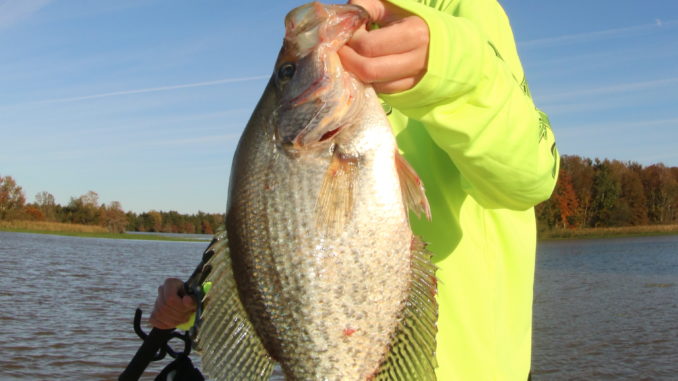
These tips will help fill your stringer of Wateree River crappie
The Wateree River is known by most anglers as a catfish river, but this river also has a good crappie population, and this time of year, anglers fishing for crappie have plenty of reasons to spend some time on this river.
Colby Long of Eastover has been fishing on this river for about 20-years, but spent most of those two decades in pursuit of catfish. About 3-years ago, he caught his first crappie on the river, purely by accident, but he’s spent many days since then going after nothing but crappie.
“I was pressed for time, so I stopped at a bait shop to get some stink bait, but they were all out, so I got the biggest minnows they had, which weren’t very big at all. I caught a few smaller catfish on them, then I started focusing on this one spot, and caught several crappie pretty quick. Once they quit biting in that hole, I moved on to another similar-looking spot. I got into the crappie again, and from then on, I’ve caught plenty of crappie in such holes,” said Long.
All the crappie spots had a few things in common, and that has helped Long continue to find crappie all up and down this river.
“I mainly fish out of the Hwy. 378 landing in Sumter and go upriver about 5-miles, then fish my way back down. But I also sometimes put in at the Hwy. 1 landing up in Camden and fish both upriver and downriver of there. I can catch crappie on all those sections, as long as I find the right mix of current, structure, and calm water,” he said.
Long mainly looks for a sharp bend in the river that has a pile of debris on the down current side of it. He fishes beside that debris pile, on the down current side of it.
“This river has a lot of deep bends and curves in it, and it’s littered with piles of washed up trees and branches. What I want to find is a pile of debris just on the other side of a deep curve, on the inside of the curve. The outside of the curve is where the fastest current is. The inside of those curves has the slackest water in the river. Sometimes there is even an eddy there. That’s where I find the crappie,” he said.
Long starts off fishing about 10-feet away from that debris pile, then works his way back to the pile if he’s not having any luck. This time of year, sometimes they are holding really tight to that debris.
“I mainly use minnows under a cork. Once I find a spot that looks good to me, I’ll anchor down, and cast out a couple of rods. It’s tough to fish more than two in the river because of the current, but if you find slack water, you can put out three or four rods. As long as you’ve got the right bait and fish those areas, you’ll find crappie. The key this time of year is that sometimes you have to fish so close to the debris that you’re getting hung up a bit. On other days, or even on the same day, the fish will be out away from that debris. They won’t be far though, so take your time finding them,” he said.





Be the first to comment